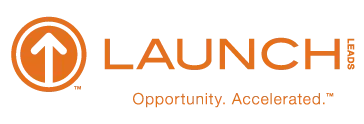Contrary to what your pride might tell you, there’s no shame in broadcasting the fact that you’re out of work on social media sites. According to an article written for Forbes by Deborah Jacobs, these sites might be your best resource in finding a job.
Read Full Article HereWhat To Say On LinkedIn When You’ve Been Laid Off
By: Deborah L. Jacobs, Forbes Staff
Many people who’ve been laid off feel like crawling in a hole, rather than broadcasting their new job status (or more accurately, lack-of job-status) to the world at large. But if you want to find another position, that’s precisely what you should do, says Sandra A.VanGilder, an executive coach with her own firm in New York.
In the current economy, with so many talented people being let go, there is “absolutely no shame whatsoever” in clearly indicating that you are out of work,” she says. “You exude confidence by not being ashamed that you’re between jobs.” LinkedIn, which functions as an electronic resume, is a valuable tool to help you spread the word.
Until they are laid off, some folks either don’t know how to use LinkedIn, or have a very skeletal presence on the site, VanGilder says. Perhaps they think of it as a job search tool (a mistaken assumption) and either aren’t looking or don’t want their bosses to think they are. Others are too busy.
Still, while three years ago, senior people thought LinkedIn was for lower-level employees, now everybody is connected and checking each other out. Often, the first thing people do when they are asked to interview someone – or even just network – is to look the person up on LinkedIn.
If you suddenly find yourself out of work, develop a “robust, 100% complete LinkedIn profile,” VanGilder advises. This site is so user-friendly that even newbies ought to be able to find their way. Those who need guidance can rely on LinkedIn’s online tutorial or enlist help from an experienced friend or tech-savvy teenager.
In creating a new profile or editing your current one, be very public about the fact that you’re looking for new opportunities,” VanGilder says. These are issues she suggests you address as you wind your way though the key sections of the LinkedIn template:
Professional Headline
In this line, which goes under your name, give a generic description of what you do or a sample job title (for example, Chief Administrative Officer, Chief Human Resources Officer). Label yourself as what you would like to be, rather than feeling limited by what your last job title was.
Current Position
Since you’re now out of work, the “Current” heading should be deleted. Before you do that, though, cut and paste your previous company and job title into the “Past” section. Then click “edit” and “delete,” and make the “Current” heading disappear. Don’t be concerned that your job shows an end date. It’s very acceptable to be in between jobs.
Continue Reading Here



